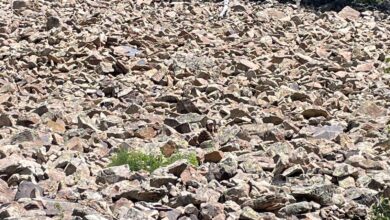Last-minute lottery tickets win big in Ireland, winners become millionaires with life-changing prize | Trending

Feb 13, 2025 09:12 PM Two Dublin residents claim €2.9 million lottery jackpot and €1 million top prize, becoming Ireland’s newest millionaires. A lottery grand jackpot of €2,935,144 and another top prize of €1,000,000 were both claimed two lucky people in Dublin after purchasing the ticket on the day of the draw. A stroke of luck unknowingly brought them a life-changing prize. The Lotto Plus One winner successfully matched all numbers and earned a whopping €1,000,000. In Dublin, two winners claimed a €2,935,144 jackpot and a €1,000,000 Lotto Plus One prize.(Representational) The National Lottery has confirmed that the store location where the winning jackpot ticket was purchased will be announced on Valentine’s day. The massive winnings have now made the two winners the newest millionaires in Ireland. Two new millionaires“What an incredible night for our players! We’ve had not one, but TWO life-changing prizes sold in the capital this week. This is truly amazing! In total, over 53,000 players won prizes in the Lotto and Lotto Plus draws, including our two top prize winners. We are absolutely thrilled and can’t wait to see the joy this brings to our two new millionaires!” Emma Monaghan, the spokesperson for the National Lottery told the Sun. Meanwhile, a group Penneys retail staff has collected a huge cheque worth €250,000. The 34 all-female group found out they won after clocking in for the work. Out of group, 23 members danced their way into National Lottery headquarters to pick up the winnings which will see each member pocket €7,353 each. Co-workers win bigDescribing the moment they heard about the win, one of the members said: “Most people who do the Lotto are the old staff. We clocked in early and we were getting briefed the store manager and she just said: “‘Our numbers came up. We won a quarter of a million.’” The group erupted in joy and screamed knowing they won big. “It was just after the Bank Holiday weekend and it was seven o’clock in the morning. It was really amazing. We done nothing that day in work. But this is kind of the first day we’ve all been together as a big group. It got out last night and there were a couple of customers floating about saying ‘did yis win?’ I might go on a few holidays. It’s fantastic, it really is. We’re all Joe Soaps, just going about our life, day-to-day working and then something like this happens. We got a party bus in from the shop. We went all out for the day that’s in it,” said another woman. Recommended Topics News / Trending / Last-minute lottery tickets win big in Ireland, winners become millionaires with life-changing prize See Less







